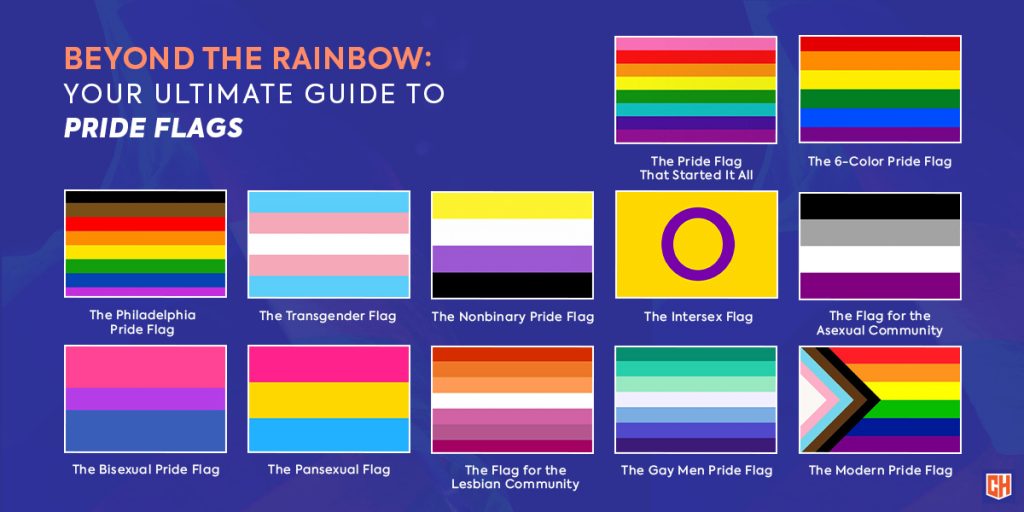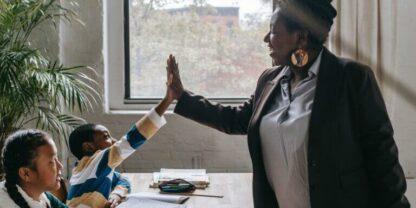June kicks off the start of Pride Month, a period where members of the lesbian, gay, bisexual, trans, and queer (LGBTQ+) community come together to share their experiences. For many people, this month is bittersweet. It is a time to celebrate the increased acceptance of the LGBTQ+ community while reflecting on additional legal and social challenges that lie ahead. Read on for some of the most popular ways to celebrate Pride Month at school.
Your students aren’t exempt from these same emotions during Pride Month. Between the years 2015 to 2019, the number of teens who identify as LGBTQ+ increased from 8.3 percent to 11.7 percent. Dr. Andrew Adesman at the U.S. Centers for Disease Control and Prevention says this might not reflect an increase in LGBTQ+ students as much as an increase in the safety and comfort they feel when coming out. This is a good sign, but there is still a long way to go.
You can take steps to create a safe learning environment for students of all genders and sexual preferences. Here’s how to celebrate Pride month at school for almost any grade or subject.
Highlight Figures in LGBTQ+ History
The LGBTQ+ community is responsible for countless artistic, technological, military, and political advances. People who identify as LGBTQ+ (even if they didn’t have a term for it) are responsible for conquering nations and captivating the attention of millions of people. Alexander the Great was known for having partners of all sexes while Alan Turing cracked coded messages that helped defeat the Nazis while hiding his sexuality.
Oftentimes, many young people don’t realize that historic figures could also identify as LGBTQ+ – simply because this is never talked about. While modern LGBTQ+ icons and role models should be respected, turning to historic figures proves that belonging to the LGBTQ+ community isn’t a modern trend.
Consider exploring ways to highlight LGBTQ+ figures, while also looking at the intersectionality of these leaders. How was novelist James Baldwin’s life experience different as both a black American and a member of the LGBTQ+ community? Were the experiences of LGBTQ+ women different in eras where they couldn’t own property or open bank accounts without a husband’s signature?
Read Books With LGBTQ+ Themes
We share experiences through stories. Kids turn to books to learn about traveling to space, fighting dragons, and fighting in the Revolutionary War. You can also use books to highlight the experiences of the LGBTQ+ community.
There are countless books that you can include in your classroom that feature LGBTQ+ characters. Younger students can enjoy titles like My Two Moms and Me or Téo’s Tutu. High school students can dive into chapter books curated by the Chicago Public Library.
As a teacher, you can decide how to celebrate Pride month at school through stories. You can assign group projects around these books, set aside time for independent reading, or simply highlight a few books your students might want to read during their free time.
Explore Different Pride Flags
As your students drive around town, they may notice different flags that are raised to celebrate Pride month. While the standard rainbow flag has been popular for years, additional flags have been developed to be more inclusive and to allow different members of the LGBTQ+ community to feel seen.
Consider developing an activity explaining the different flags and allowing students to explore their meaning. For example, why are the black and brown bands significant in some rainbow flags? Why is it important to highlight marginalized people of color and those living (or no longer living) with AIDS?
Not only are each of these flags significant, but they also include stories about who developed them and why they chose certain designs or colors. You can develop lesson plans for almost any grade around Pride flags.

Image Credit: Cade Hildreth
Introduce the Concept of Allyship
When you determine how to celebrate Pride month at school, consider your ultimate goals when working with your students. Your lessons should support LGBTQ+ students or students with family members who identify with the LGBTQ+ community all year long. However, take this time to validate the experience of this community and create a culture of inclusivity in your classroom whether they identify with the LGBTQ+ community or not.
Review some of the lesson plans developed by the Human Rights Campaign Foundation on preventing bias and bullying. There are multiple age-appropriate guides that introduce the concepts of bias, bystanders, and allyship. What does it mean to actually be an ally? Why does staying silent as a bystander actually help bullies?
These lesson plans can apply to any student who faces discrimination or judgement from their peers or their community, whether they speak a second language, practice a unique religion, or simply look or dress a little different from their peers.
Discuss Gender-Inclusive Pronouns
Another way to create a more inclusive classroom is to develop lesson plans around gender-inclusive pronouns. The group Educators 4 Social Change curated multiple lesson plans that you can use and modify for different age groups.
Pronoun choice can validate a person’s gender identity while gender-neutral pronouns can create more inclusive spaces. For example, consider the differences in greeting an audience with the phrase, “hello, new friends,” versus the standard, “hello, boys and girls.”
You can also use these lesson plans to identify times when it might be useful for someone to clarify their pronouns – especially when talking with older students who communicate digitally or will use communication in future workplaces. People with gender-neutral names (like Talyor, Jamie, Lee, and Jordan) might get misgendered frequently. Your students can use pronoun clarification so they don’t misgender someone who they need to speak to in a professional setting.
Build Inclusivity Into Your Classroom Year-Round
It’s incredibly exciting when teachers decide how to celebrate Pride month at school. Educators across the country have developed unique lesson plans that can engage almost any student. However, Pride month doesn’t have to end at the start of July. In the same way that you can celebrate and honor Americans of different backgrounds throughout the year, you can build inclusivity into your day-to-day classroom activities.
For example, look for games, activities, and lessons that are naturally inclusive regardless of whether they are touching on LGBTQ+ topics. At eSpark, we believe the most engaging content for students is content they can relate to and see themselves in. We are always working to create new games and activities that reflect different backgrounds and identities.



